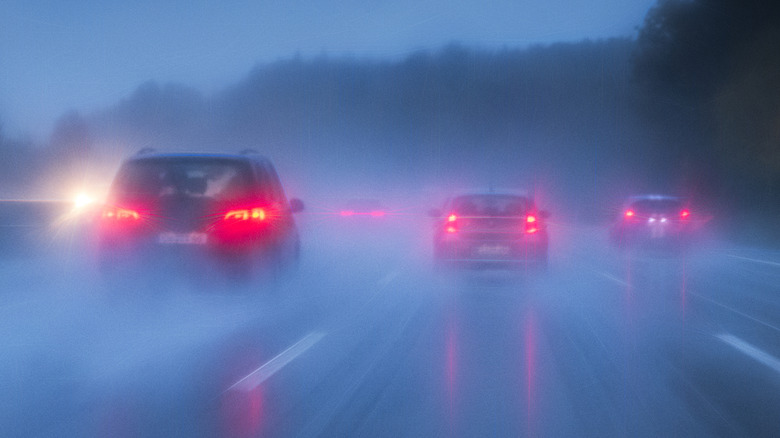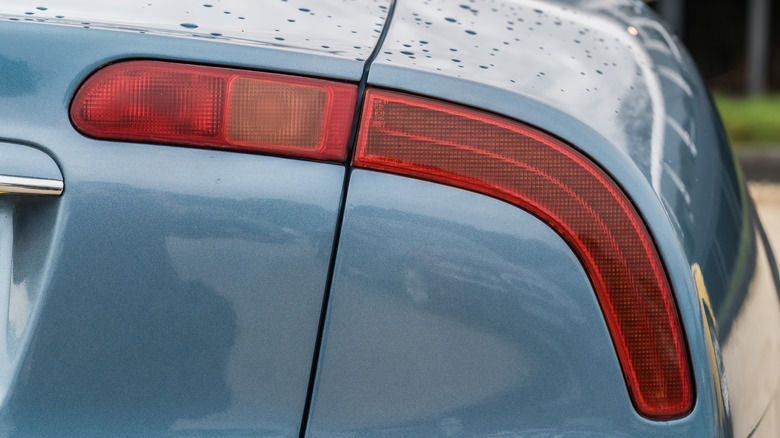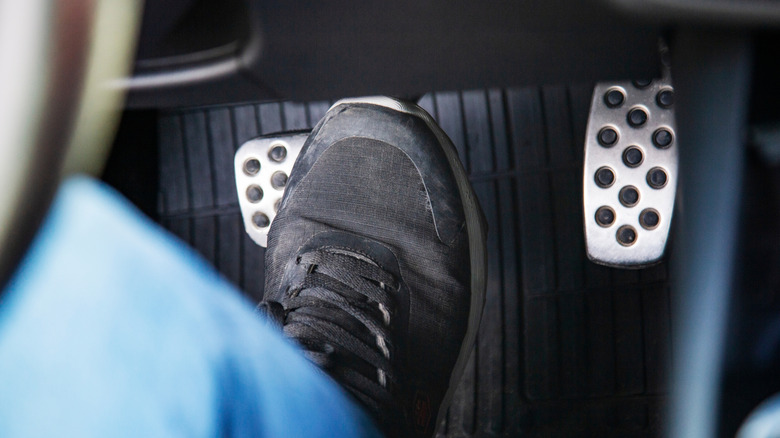Tail Lights And Brake Lights Are Not The Same Thing - Here's The Difference
While it's easy to see what the headlights at the front of our cars do, the same isn't necessarily true for lights at the rear. But we're not talking about brake lights. Put simply, tail lights, which are separate, let drivers behind you know where your vehicle is. Meanwhile, brake lights let drivers know when you brake. These are not the same thing: brake lights come on whenever the brake pedal is pushed down, while tail lights come on and stay on with the headlights.
The two tail lights on either side of your car (or one, on a motorcycle) provide a steady, non-flashing red beams that show your vehicle's position on the road. These are required for driving at night, or whenever visibility is poor. On some vehicles, the headlights and tail lights come on automatically in low light — for example, when entering a tunnel. Some newer vehicles have daytime running lights at the front, but DRLs do not turn on your headlights or tail lights.
Brake lights are actuated by a switch at the brake pedal. These rear lights should only come on during braking, much more brightly than tail lights. Both tail lights and brake lights may be in the same housing, even sharing the same LEDs or bulbs. On older cars, the brake light and tail light filaments are typically in the same bulb, with two contacts on its base: one for the lower-wattage tail light filament, and for the one higher-wattage brake light filament.
Do all vehicles need rear lights?
Not all vehicles must have brake lights and tail lights fitted, although they are a requirement if the vehicle is to be road-registered. These rear lights help mitigate the risk of a rear-end crash, especially in the kind of stop-start, high speed driving we see in traffic jams and freeways. According to the Federal Motor Vehicle Safety Standards, the increased visibility provided by tail lights reduces the number of accidents across U.S. highways.
Some off-road vehicles do not need rear lights under the road rules, but may require them under separate industrial or work-related safety laws. Motorcross or scrambler bikes typically do not need them when used off road, but rear lights can be fitted when making your dirt bike street legal. In contrast, Formula 1 cars do have rear lights , but they are not what you mnight expect. Rather than letting F1 drivers know the race car in front is braking, these lights flash when it is not about to accelerate as fast as might be expected.
With the advent of LED technology, some cars use their tail lights as a design feature — what Jalopnik writer Jason Torchinsky calls "the technosquiggle", where elongated bars of LED lights decorate the rear of the vehicle. Maserati was an early adopter of this trend, when in 1998 it featured long, boomerang-shaped tail lights on its 3200GT, setting the stage for many and varied squiggly designs to follow.
How to check your brake and tail lights
Tail lights can indeed be a classy design feature, and we can find plenty of examples of classic cars with cool tail lights. But it is more important, and in most places a legal requirement, to have your tail lights and brake lights in working condition. A light can fail for a number of reasons, including damaged wiring, a blown bulb, blown fuse, or faulty switch. The tail light switch is typically part of the headlight stalk control, while the brake switch is usually at the top of the brake pedal, near the pivot.
To check your tail lights, turn the headlights on. Standing behind the vehicle, ensure both rear lights are illuminated, and at the same level of brightness. They should turn off with the headlight switch. To check your brake lights, have a helper stand behind the car as you step on the brake pedal. Again, both rear lights should illuminate, this time more brightly. To double-check, turn the tail lights on and depress the brake pedal again. The brake lights should be much brighter than the tail lights.
You can regularly run these checks by yourself. Any time you reverse-park with a reflective shop window behind your car, use your rear view mirrors to watch the reflection of your rear lights in the glass. This is a good habit to get into — much better than having a patrol officer inform you that a rear light is out, while writing a citation.


